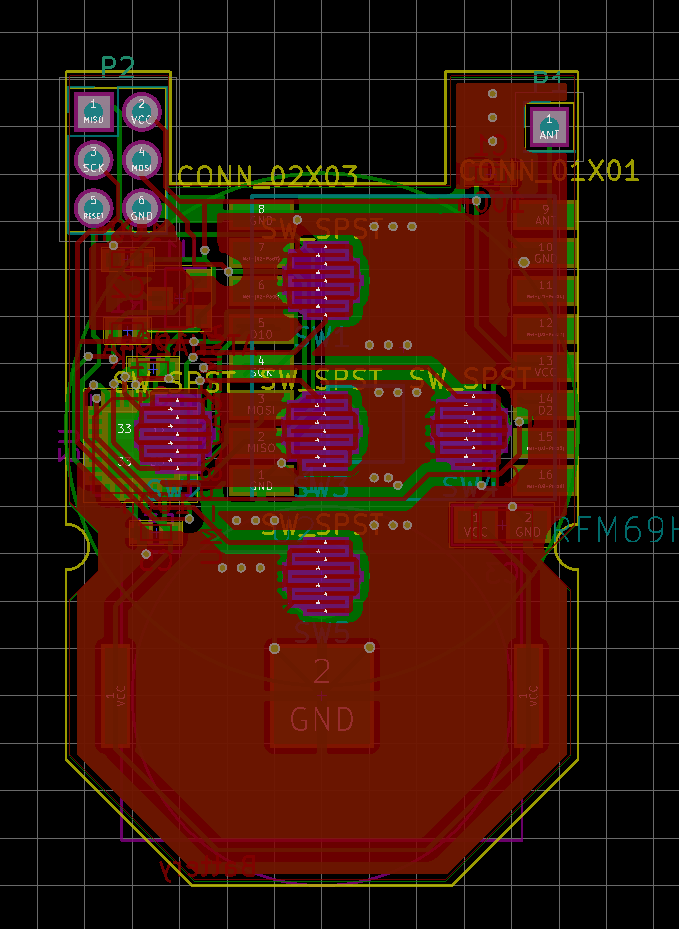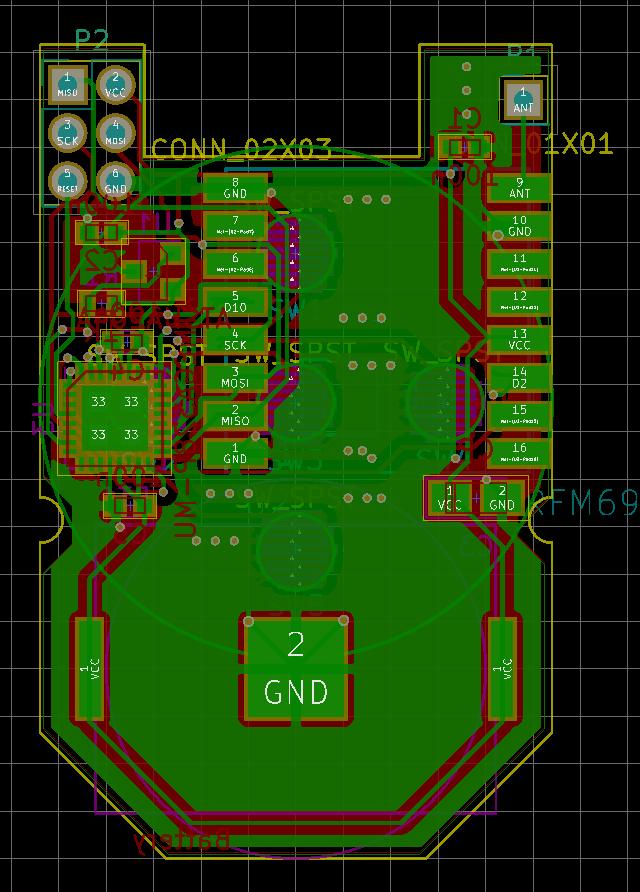Secure 5-button keyfob with enclosure (was: 8-button keyfob)
-
@Anticimex The idea is to let one accessible node alone. Just get the id out and leave it where it is. So there would be no reason to take that node's id off the whitelist.
-
@Anticimex The idea is to let one accessible node alone. Just get the id out and leave it where it is. So there would be no reason to take that node's id off the whitelist.
-
@Anticimex Oh, forget what I said. I thought that the whitelisting was on network access basis. But the doorlock has to trust the id via whitelisting, and of course it wouldn't trust a patio motion sensor.
-
@Anticimex Oh, forget what I said. I thought that the whitelisting was on network access basis. But the doorlock has to trust the id via whitelisting, and of course it wouldn't trust a patio motion sensor.
-
@Anticimex Oh, forget what I said. I thought that the whitelisting was on network access basis. But the doorlock has to trust the id via whitelisting, and of course it wouldn't trust a patio motion sensor.
-
So apparently it it will be a while until I can do active testing. Right now I am struggling to get my network running at all.
I'll quickly post it here in case someone has an idea, else I'll open a thread next week when I actually have time to react to suggestions.
I have flashed the GatewayESP8266MQTT sketch to my gateway (Wemos D1 Mini + RFM69HCW). This is the output:
0;255;3;0;9;TSF:LRT:OK 0;255;3;0;9;TSM:INIT 0;255;3;0;9;TSF:WUR:MS=0 0;255;3;0;9;TSM:INIT:TSP OK 0;255;3;0;9;TSM:INIT:GW MODE 0;255;3;0;9;TSM:READY:ID=0,PAR=0,DIS=0 0;255;3;0;9;MCO:REG:NOT NEEDED scandone f 0, scandone state: 0 -> 2 (b0) state: 2 -> 3 (0) state: 3 -> 5 (10) add 0 aid 3 cnt connected with MySSID, channel 1 dhcp client start... ...ip:192.168.2.127,mask:255.255.255.0,gw:192.168.2.1 .IP: 192.168.2.127 0;255;3;0;9;MCO:BGN:STP 0;255;3;0;9;MCO:BGN:INIT OK,TSP=1 IP: 192.168.2.127 0;255;3;0;9;Attempting MQTT connection... 0;255;3;0;9;MQTT connected 0;255;3;0;9;Sending message on topic: home-le/mysensors/868/in/0/255/0/0/18 pm open,type:2 0The message is successfully published on the MQTT server.
I flashed the LightSensor sketch on another breadboard node (Arduino Pro Mini + RFM69HCW). This outputs
0 MCO:BGN:INIT NODE,CP=RRNNA--,VER=2.1.1 4 TSM:INIT 4 TSF:WUR:MS=0 8 TSM:INIT:TSP OK 10 TSM:FPAR 141 TSF:MSG:SEND,255-255-255-255,s=255,c=3,t=7,pt=0,l=0,sg=0,ft=0,st=OK: 2148 !TSM:FPAR:NO REPLY 2150 TSM:FPAR 2281 TSF:MSG:SEND,255-255-255-255,s=255,c=3,t=7,pt=0,l=0,sg=0,ft=0,st=OK: 4290 !TSM:FPAR:NO REPLY 4292 TSM:FPAR 4423 TSF:MSG:SEND,255-255-255-255,s=255,c=3,t=7,pt=0,l=0,sg=0,ft=0,st=OK: 6432 !TSM:FPAR:NO REPLY 6434 TSM:FPAR 6565 TSF:MSG:SEND,255-255-255-255,s=255,c=3,t=7,pt=0,l=0,sg=0,ft=0,st=OK: 8574 !TSM:FPAR:FAIL 8577 TSM:FAIL:CNT=1 8579 TSM:FAIL:PDTWhich apparently indicated that no parent could be found. The gateway doesn't output anything.
I did not make any changes to the gateway sketch except for password and name stuff (especially no inclusion mode). Devices are a meter apart, one with a spring antenna, the other with a big screw-on antenna.
-
-
@MiKa If you happen to have time, could you test the range with
- a stable 2.7V supply and
- a 1mF cap in parallel to the battery?
I am really not happy with the HT7333 solution, since the shelf life of the keyfob will be limited and the quite expensive LIR2032 can easily be damaged by undervoltage.
If the second test works, I could fit 4 220uF 6.3V tantalums next to the LED.
Else I would give the step-up thing another go. There are low profile inductors, but I didn't find any for cheap (shipping) at Aliexpress.


